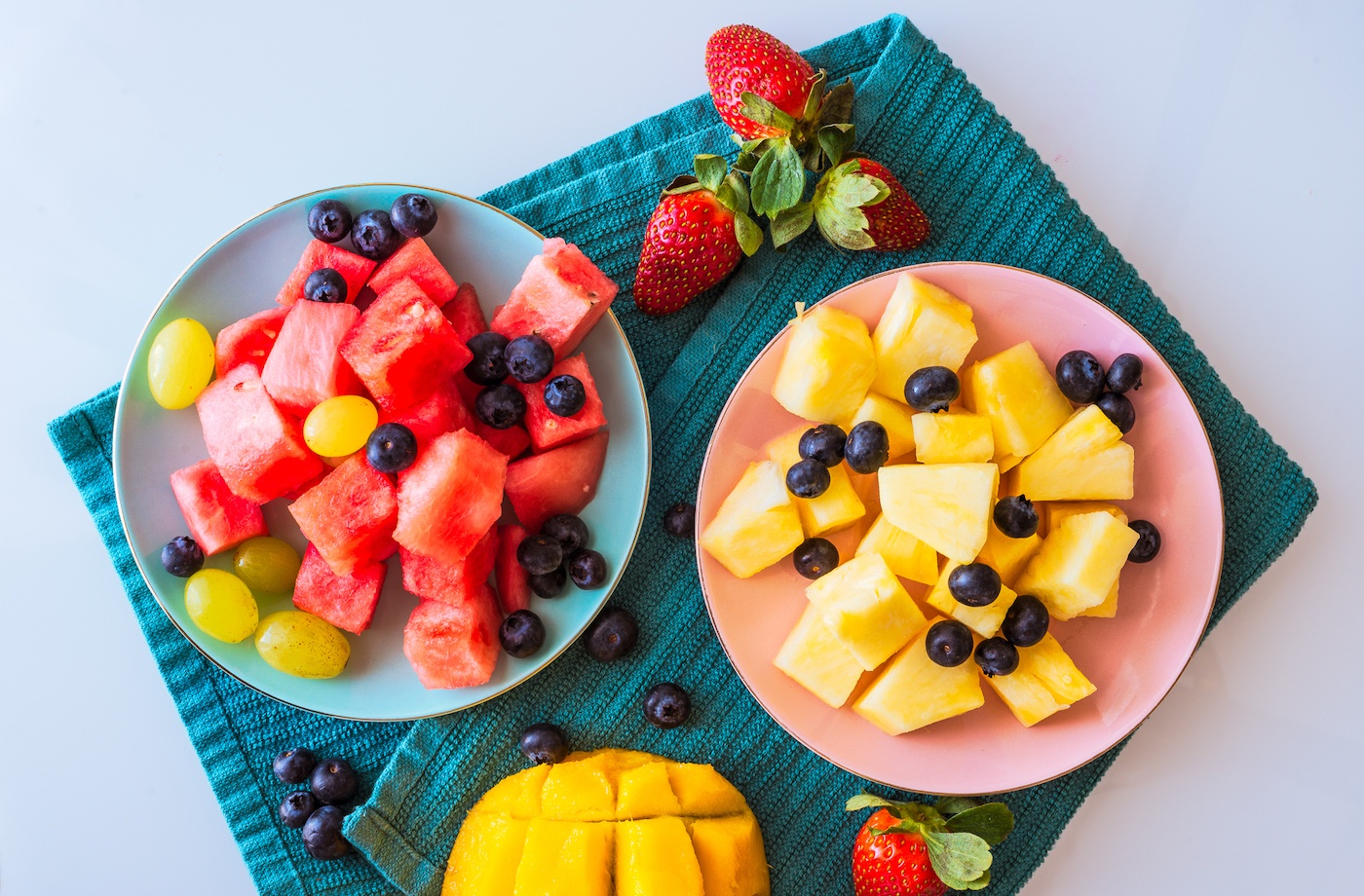
August 14, 2019 at 09:57AM by CWC
When it comes to healthy eating, it’s official: Sugar, not fat, is the “big bad” of the nutrition world. Excessive sugar intake is linked to Type 2 diabetes, chronic inflammation, and other long-term health consequences, and most of us are eating way too much of it. When recommending ways to cut back on added sugar intake, one buzzword is frequently thrown around by nutrition experts: the glycemic index.
The glycemic index (GI) essentially assigns scores to various foods with carbohydrates, rating them on how big or how small of an impact those foods can have on your blood sugar levels. This ranking system shows that not all carbs are created equal when it comes to your blood sugar—some have a minimal impact, while some can cause huge spikes that can lead to a rollercoaster crash later on in the day.
But while some experts swear by the glycemic index to help people be more mindful of their sugar intake, the ranking system is a bit more nuanced than just determining which foods are “good” for blood sugar and which ones are “bad.” Here’s what you need to know about the nutrition buzzword.
How does the glycemic index work?
The glycemic index was originally developed for the diabetic community. “It created a numerical index or ranking of carbohydrates based on how they impact blood sugar levels when eaten without any other foods,” says Robert Glatter, MD, an assistant professor of emergency medicine at Northwell Health and attending emergency physician at Lenox Hill Hospital.
ADVERTISEMENT
ADVERTISEMENTKate Spade Autumn/Winter Sale |
“GI is a measure of how 50 grams of carbohydrates from a specific food affect blood sugar levels. For this measure, the amount of food consumed is the amount that will provide 50 grams of carbohydrates,” says Suzanne Dixon, MS, RD. The glucose response of a food in question is then compared to a “GI standard,” which is typically a glucose drink, table sugar, or white bread, and then assigned a score. “For example, to determine the GI of carrots, you would have people consume the amount of carrots that provide 50 grams of carbohydrates, and compare that against the 50 grams of carbs for a GI standard (sugar or white bread),” she says.
What are some examples of the glycemic index in foods?
In general, a food is considered low GI if it scores 55 or below. A medium-GI food has a score of 56 to 69, and a high-GI food has a score of 70 or above.
It might be easy to just assume that all foods with a low score are healthy, and the ones that have a high score are not. Yet Dixon points out that some healthy carbs might have a similar GI score as less healthy items. Here are some examples:
- White bread: 73
- Sucrose (white table sugar): 65
- Cantaloupe: 65
- Honey: 61
- Sweet corn: 52
- Mango: 51
- Corn tortilla: 46
- Steel cut oatmeal: 42
- Apple juice: 41
- Rye bread: 41
- Chocolate: 40
- Cooked carrots: 39
- Chickpeas: 28
- Soy beans: 16
- Fructose: 15
Consider the fact that cantaloupe, a fruit that keeps you hydrated and offers vitamins and fiber, has the same GI as white table sugar. And honey, typically billed as a healthier sweetener option than sugar, scores pretty similarly when it comes to its impact on your blood glucose levels.
Looking for a low-GI dessert? Check out these delicious vegan brownies:
How accurate is the glycemic index?
Dixon says that the glycemic index can be a helpful tool for people to consider when making food choices—especially if they have diabetes or another condition that requires them to closely monitor carbohydrate intake—but it comes with some caveats. “GI can be misleading because it doesn’t account for serving size,” she says. Remember, it’s scoring foods based on whatever amount will provide 50 grams of carbohydrates, not necessarily on the amount that people eat in a typical serving. For example, she says watermelon has a very high GI of 80. Yet a two-cup serving size contains 23 grams of carbs, so that 80 score actually reflects what would happen to your blood sugar if you ate more like four and a half cups—which most people likely aren’t doing.
There is another measure of how a food can affect your blood sugar which takes serving size into account. “This is called glycemic load,” says Dixon. “It’s a more accurate reflection of how these foods affect our blood sugar and insulin response when eaten in a typical way in a typical diet.” It essentially looks at both how quickly a food affects your blood sugar and how much glucose it will actually add to your bloodstream. Using the watermelon example, Dixon says that while the fruit has a high GI, it’s also mostly water and doesn’t actually have a ton of carbs per serving. “Taking this into account, the GL is very low at 5,” says Dixon.
There’s also evidence that not all foods affect people in the same way, particularly when it comes to GI. A 2016 study published in the American Journal of Clinical Nutrition evaluated the blood sugar of 63 healthy people several hours after they were given 50 grams of glucose, either in the form of white bread or in a glucose solution. This test was repeated among subjects in the study, with the goal of evaluating the glycemic index of the bread. “But the researchers noted some startling findings. There was a 20 percent difference in measured glycemic index of the exact same food between tests in the same individual, and there was a 25 percent difference between participants. The bottom line is that the glycemic index was not consistent or reliable—even when the food was eaten alone under controlled circumstances,” says Dr. Glatter.
The hard numbers might also make people oversimplify prioritizing certain foods over others. “Pure fructose [sugar most often found in fruit] has a GI of 15,” says Dixon as an example. “But while fructose doesn’t have a big impact on blood sugar levels, it can lead to fatty build up in the liver.” Too much fructose from a heavy-processed food diet (think soda and baked goods, not whole fruit) is linked with increased risk of non-alcoholic fatty liver disease (NAFLD), she adds. So while fructose doesn’t hit blood sugar so hard, it can be pretty hard on the liver in excess—yet another reminder that healthy eating really is all about balance.
How useful are these numbers for someone’s health?
For most people: not much. “It can be helpful in the sense that a whole-foods, minimally processed food diet tends to be lower GI overall,” says Dixon, but it shouldn’t be the end-all, be-all guide you use to decide which foods to put on your plate.
Plus, while it could be helpful for the diabetic community, it is still misleading for them, too, says Dixon. “As I pointed out, fructose as a sweetener or form of sugar doesn’t have a large impact on blood sugar levels. But on the flip side, it can promote fat storage in the liver, which is not healthy for anyone, particularly people with diabetes,” she explains. “This is why I always encourage anyone with a chronic, diet-related health condition such as diabetes to see a knowledgeable health professional for dietary guidance.”
“While following the glycemic index or glycemic load may be helpful for managing those with diabetes, there is no consistent evidence that adhering to a diet based on glycemic index for non-diabetics is able to consistently promote weight loss or prevent chronic disease,” concludes Dr. Glatter. “For those without diabetes, instead of using the glycemic index or load, it’s best to simply reduce intake of added sugars by limiting refined or processed foods as well as sugar-sweetened beverages,” he says. Good to know.
ADVERTISEMENT
ADVERTISEMENTSports Direct Free Delivery on All Orders! |
Yes, sugar isn’t the best thing for your health…but overly fearing it can cause big problems, too. And here’s what happened when one editor decided to totally cut out processed foods from her life.
Author Isadora Baum | Well and Good
Selected by CWC
ADVERTISEMENT
ADVERTISEMENTUp to 30% off Gift Sets |







